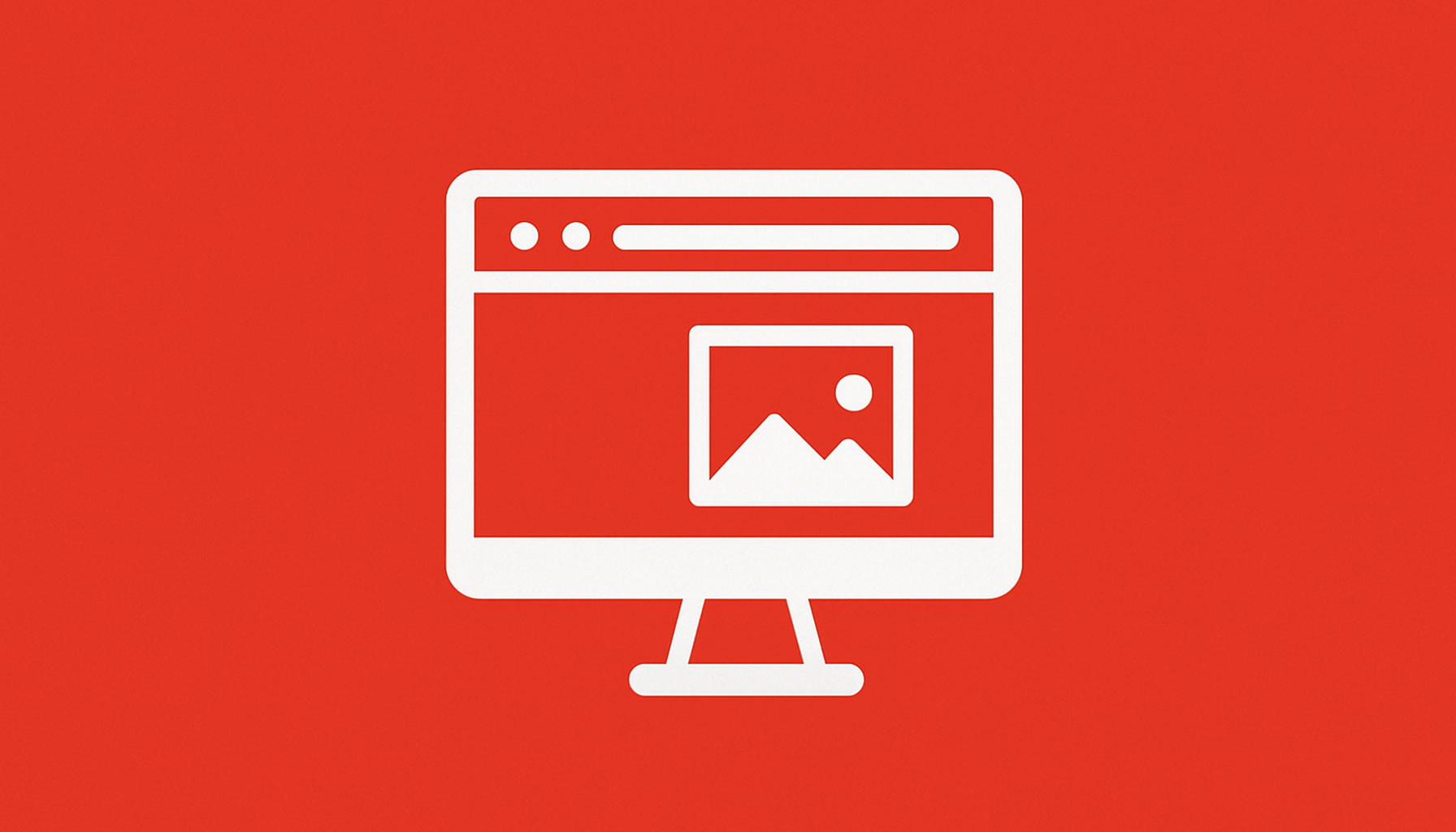Traditionally, the homepage has been the cornerstone of web design—the first impression and primary navigational hub for users. Designers meticulously crafted homepages to encapsulate a brand’s identity, showcase key messages, and direct users to various sections of a site. However, as user behavior evolves, the relevance of the traditional homepage is being questioned. In an age dominated by deep linking, dynamic content, and mobile-first experiences, websites are increasingly being accessed through alternate entry points.
The concept of a “homepage-free” design might sound radical, but it’s gaining traction. Many modern websites are moving away from centralized navigation in favor of distributed, context-driven designs. This article explores the implications, benefits, and challenges of designing websites without a homepage or a home button, offering insights into a future where traditional navigation structures may become obsolete.
The Evolving Role of the Homepage
For decades, the homepage was the cornerstone of web design. It acted as the primary entry point, offering a structured overview of a site’s purpose, content, and navigation. A well-designed homepage was like a digital business card, delivering a first impression while guiding users to explore further. Whether users arrived by typing in a URL or clicking on a search engine result, the homepage was the natural starting point for most online journeys.
But today, the role of the homepage is being fundamentally redefined. Studies reveal that the majority of users no longer interact with websites in a linear, homepage-first manner. Instead, they enter through “side doors,” bypassing the homepage entirely. For instance, someone searching for a specific product might land directly on a product detail page, while a blog post or social media share may lead users straight to a piece of content deep within the site.
The Impact of Social Media and Search Engines
The rise of platforms like Instagram, TikTok, and Pinterest has significantly changed how users navigate the web. These platforms direct traffic to specific pieces of content rather than generic homepages. A business showcasing a product on Instagram, for example, will often link users directly to the product page to minimize friction in the purchasing journey. This targeted entry point not only increases conversions but also renders the homepage less critical for many users.
Shifts in Design Philosophy: Single-Page and Dynamic Sites
Another factor driving the evolution of the homepage is the growing popularity of single-page websites and dynamic scrolling experiences. Websites for creative professionals, startups, or events often opt for this streamlined format, presenting all content on one continuous page. For example, Apple’s product launch pages or Behance design portfolios deliver information in a fluid, visually engaging way that eliminates the need for a traditional homepage. Instead of navigating through multiple sections, users can scroll to access all relevant content.
This approach caters to modern users’ expectations for immediacy and simplicity. In an era where attention spans are short, requiring users to navigate multiple clicks to access the information they need can result in frustration or loss of interest.
Changing User Expectations
Beyond technical advancements, the shift in homepage usage reflects changing user expectations. People no longer view websites as static “places” but rather as dynamic ecosystems tailored to their needs. They expect personalized experiences and content delivered in context. For example, Amazon takes users directly to product recommendations or search results based on past behavior, often skipping the homepage altogether.
In this context, the homepage is becoming less of a starting point and more of a fallback—a place users might visit only when they’re unsure where to go next. As a result, web designers are rethinking navigation structures, prioritizing intuitive, intent-driven entry points over traditional layouts.
The homepage isn’t dead yet, but its dominance is waning. Instead of being the definitive entry point, it’s now just one of many possible gateways to the broader digital experience.
Why Home Buttons Are Becoming Obsolete
The decline of the home button is not a random trend but a reflection of significant shifts in user behavior, technological advancements, and design philosophy. What was once a staple in website navigation is now being replaced by more dynamic, intuitive alternatives that align with modern user expectations.
The Influence of Mobile-First Design
Mobile-first design has fundamentally altered how users interact with websites. On mobile devices, navigation relies heavily on gestures such as swiping, tapping, or scrolling, rather than static buttons. Sticky navigation bars and contextual menus have emerged as more user-friendly solutions, providing constant access to critical features without requiring users to return to a “home” button.
For instance, YouTube’s mobile app exemplifies this shift. Its persistent bottom navigation bar allows users to switch between tabs like “Home,” “Subscriptions,” and “Library” without ever needing a dedicated home button. Similarly, apps like Spotify and Instagram prioritize gesture-based navigation that makes the concept of “going home” almost redundant.
Search Engines and Deep Linking
Search engines like Google have disrupted traditional website navigation. Advanced algorithms and AI enhancements are designed to deliver users directly to the most relevant content within a site, bypassing homepages entirely.
For example, on an e-commerce website like Amazon, a user searching for “wireless headphones” will likely land directly on a product detail page rather than the homepage. This is not an accident—search engines prioritize deep linking to pages that match user intent. For many visitors, the homepage is no longer the gateway but a backup they may never need.
In such scenarios, the home button becomes less useful because users navigate based on their specific goals. They don’t need to “start over” when they’ve already landed on what they’re looking for.
The Rise of Personalized Experiences
Another driving force behind the decline of home buttons is the rise of AI-driven personalization. Websites and platforms increasingly deliver tailored experiences based on user behavior, preferences, and past interactions. This personalization reduces reliance on a centralized hub, as content is curated dynamically for each individual.
Platforms like Netflix and Amazon Prime exemplify this trend. On Netflix, for instance, users are greeted with personalized recommendations immediately upon login, with no need to navigate to a static homepage. Similarly, Amazon’s homepage dynamically updates with suggested products, deals, and categories based on the user’s browsing and purchase history.
This evolution highlights a move toward intent-driven navigation, where the user journey is guided by context rather than rigid structures. By understanding user behavior, websites can predict needs and surface relevant content without requiring a manual return to “home.”
The Shift Toward Seamless Experiences
As web design moves toward creating frictionless user experiences, the home button feels increasingly out of place. Today’s users expect seamless, intuitive navigation that adapts to their needs in real-time. Rather than relying on static navigation elements, modern websites integrate interactive features like breadcrumbs, floating action buttons, and predictive search bars to guide users through their journey.
In this environment, the home button feels like a relic of the past—useful in its time but no longer essential in a world of sophisticated, context-aware design. While some websites may still retain a home button for legacy purposes, its importance is rapidly diminishing as designers embrace a future built on personalization, immediacy, and user intent.
Advantages of Homepage-Free Designs
The concept of homepage-free design may seem unconventional at first, but its advantages are compelling for both users and businesses. By prioritizing user intent and direct access to relevant content, this approach aligns with the expectations of modern, time-conscious audiences while delivering tangible business benefits.
Streamlined Navigation and Reduced Friction
One of the most significant benefits of homepage-free design is its ability to streamline navigation. Instead of forcing users to start their journey on a generic homepage and navigate through layers of menus, this approach allows them to access the information or features they need directly.
Consider Spotify, a platform that epitomizes this concept. Rather than leading users to a central homepage, Spotify immediately presents personalized recommendations, curated playlists, and trending content. This design eliminates unnecessary steps, delivering value from the moment a user logs in. By reducing friction, Spotify enhances user satisfaction and keeps users engaged longer.
Immersive and Intent-Driven Storytelling
Homepage-free designs offer businesses the opportunity to focus on immersive storytelling tailored to specific user intents. Instead of relying on a single central page to communicate their brand message, companies can create dynamic landing pages that guide users through curated experiences.
A prime example of this is Airbnb, which often bypasses a traditional homepage in favor of thematic landing pages. For instance, during peak travel seasons or special campaigns, Airbnb’s pages might highlight unique stays, curated travel itineraries, or trending destinations. This targeted approach not only engages users more effectively but also increases the likelihood of conversions by aligning the content with user intent.
Enhanced Performance and Faster Load Times
Large, feature-heavy homepages often act as bottlenecks for website performance. By removing the homepage or minimizing its role, websites can optimize load times and provide a smoother experience. This is especially critical in an era where users expect instantaneous access and search engines prioritize page speed in their ranking algorithms.
Minimalist portfolio websites, such as those created on platforms like Squarespace or Cargo, illustrate the benefits of this approach. These sites typically skip traditional homepages, leading users directly to galleries, contact forms, or project details. By focusing on direct content delivery, these websites load faster and maintain a clean, distraction-free aesthetic that aligns with modern design trends.
Improved SEO and Targeted Traffic
Homepage-free designs are inherently aligned with how search engines and social media platforms direct traffic. By optimizing individual pages for specific keywords and intents, businesses can attract targeted audiences without relying on a central homepage as the entry point.
For instance, e-commerce websites like Etsy or Zappos often see higher engagement on product or category pages than on their homepages. By ensuring these pages are easily accessible and well-optimized, businesses can capture more relevant traffic and guide users toward conversion without requiring a detour to the homepage.
A Modern Approach to User Behavior
Ultimately, homepage-free design reflects the realities of modern user behavior. Today’s internet users are task-oriented and expect immediate results. By designing for direct entry points rather than a centralized hub, businesses can meet users where they are—whether it’s through a search engine, social media post, or email campaign.
This approach empowers businesses to deliver value quickly, craft more engaging user journeys, and improve overall website performance. As web design continues to evolve, the homepage may no longer be the focal point of a website but rather one of many tools to guide users through a seamless, intent-driven experience.
Challenges and Considerations
While homepage-free designs offer exciting possibilities, they are not without challenges. Transitioning away from a traditional website structure can create usability and accessibility hurdles that must be carefully addressed to ensure a positive user experience. Below are some key challenges and considerations that designers must keep in mind.
Adapting for Users Accustomed to Traditional Structures
Many users, especially those in older demographics or less tech-savvy audiences, are accustomed to websites with a clear, central homepage and a prominent home button. A homepage often acts as a safety net—a place to return to when users feel lost. Removing this familiar anchor can lead to confusion, frustration, and potentially higher bounce rates.
For example, an older user browsing an e-commerce website might struggle to navigate a homepage-free design if they can’t find a recognizable “Home” button to reset their journey. To address this, designers can implement clear navigation cues, such as persistent menus, breadcrumbs, or strategically placed call-to-action buttons, to help users orient themselves.
Accessibility Challenges
Accessibility is a critical consideration for any website design, and homepage-free designs present unique challenges. For users with disabilities, a homepage often serves as an anchor point that provides consistent navigation cues. Without it, designers must ensure that alternative navigation structures are intuitive, inclusive, and easy to use.
Key accessibility measures include:
- Clear visual hierarchies: Ensuring users can easily identify where they are within the site and how to navigate back or forward.
- ARIA labels and semantic HTML: Providing meaningful labels for screen readers to guide visually impaired users effectively.
- Keyboard-friendly interfaces: Allowing users to navigate seamlessly using a keyboard, particularly for those with motor disabilities.
For instance, a homepage-free website like Stripe, a payment platform, emphasizes accessibility by incorporating well-defined navigation elements and clear page structures that accommodate users with different needs. This ensures the absence of a homepage doesn’t hinder usability.
Balancing Creativity with Usability
Designers often face a dilemma when balancing creative expression with user functionality. While avant-garde designs may capture attention and showcase innovation, they can also alienate users if they prioritize aesthetics over practicality.
Take the example of highly experimental websites that eliminate not just homepages but also conventional navigation patterns, relying solely on abstract animations or obscure gestures. While these designs may win awards for creativity, they risk frustrating users who cannot quickly locate essential information or complete key actions.
To strike the right balance, web designers should test their concepts with real users before implementation. Tools like A/B testing and heatmaps can help identify pain points in navigation and ensure that creative choices enhance rather than detract from the user experience.
Content Organization and SEO Implications
Without a homepage to act as a centralized hub, designers must carefully organize content to ensure users can find what they need easily. This includes optimizing individual pages for specific keywords and ensuring that navigation pathways are logical and efficient.
Additionally, search engines often use the homepage as a reference point for crawling and ranking a site. Designers need to implement proper internal linking strategies, XML sitemaps, and schema markup to ensure search engines can effectively index and rank all pages.
Overcoming Perceived Complexity
For large or multi-faceted websites, such as those for universities or multinational corporations, eliminating a homepage may seem daunting. These websites typically serve diverse user groups with varying needs, making a central hub an efficient way to guide users. To address this challenge, designers can create segmented entry points or personalized dashboards that replicate the functionality of a homepage without adhering to the traditional structure.
While homepage-free designs offer significant advantages, they require careful planning and execution to avoid alienating users. By prioritizing clear navigation, accessibility, and usability, designers can overcome these challenges and create innovative web experiences that cater to modern user behavior without sacrificing inclusivity or functionality. Thoughtful user testing and iterative design will be key to successfully transitioning to a homepage-free future.
Real-World Examples
The shift toward homepage-free designs is no longer theoretical. Many brands and platforms have embraced this approach, offering compelling examples of how eliminating a traditional homepage can lead to more dynamic, user-focused experiences. These real-world applications showcase how diverse industries have adapted this concept to meet specific user needs while streamlining navigation and enhancing engagement.
Spotify: Personalized Experiences Over Static Homepages
Spotify is a prime example of a platform that has redefined user engagement by focusing on personalized content rather than a static homepage. Upon logging in, users are greeted with curated playlists, recommendations, and recently played tracks. There’s no single, static “home” page; instead, the experience is built around delivering value immediately based on user preferences and listening history.
This design choice reflects Spotify’s understanding of user intent. Instead of navigating through a homepage to find content, users can jump straight into music tailored to their tastes. This approach not only saves time but also reinforces Spotify’s role as a personalized music discovery platform.
Medium: Contextual Landing Pages for Readers
Medium, a platform for reading and sharing articles, has also embraced a homepage-free design philosophy. When users log in, they are directed to a feed of recommended articles based on their reading history, preferences, and the authors or topics they follow. There’s no central homepage to browse; instead, users are immersed in a highly personalized reading experience from the start.
This approach aligns with Medium’s goal of delivering content that resonates with individual users. By skipping a generic homepage, Medium ensures that every interaction feels relevant and engaging, encouraging users to spend more time exploring content.
Apple’s Product Launch Microsites: Intent-Driven Design
Apple’s product launch microsites provide another excellent example of homepage-free design. When Apple unveils a new product, it often creates a standalone microsite that serves as a comprehensive, immersive landing page for that product. These pages guide visitors through key features, videos, and technical specifications without requiring navigation to or from a central hub.
For example, the microsite for the iPhone 15 Pro directs users to explore the device’s design, performance, and camera features through interactive scrolling and visually rich storytelling. By focusing entirely on the product, Apple ensures that visitors can find the information they need without unnecessary detours, enhancing user satisfaction and boosting conversions.
Event-Specific Websites: Focused User Journeys
Event-specific websites, such as those for music festivals, conferences, or product launches, often forego traditional homepages entirely. These sites are designed to deliver relevant information quickly, guiding users to essential details such as schedules, ticketing, or speakers.
For instance, the website for Coachella, a popular music festival, prioritizes user needs with intuitive navigation that takes visitors directly to lineup announcements, ticket purchasing, and festival maps. There’s no need for a traditional homepage, as the site is designed to cater to the specific intent of its audience.
Squarespace and Minimalist Portfolios
Many minimalist portfolio websites, often built on platforms like Squarespace or Webflow, demonstrate how skipping a homepage can enhance the user experience. These sites frequently lead users directly to the most important content, such as a gallery of work, a contact form, or an “About” section.
For example, a graphic designer’s portfolio might open directly to a visual gallery of their projects, with navigation links for additional context like client testimonials or background information. By eliminating a homepage, these sites cut straight to the value, aligning with the user’s intent to evaluate the designer’s work.
A New Standard for User Intent
These examples demonstrate that homepage-free designs are not a one-size-fits-all approach but can be adapted to various industries and purposes. Whether through personalized content, immersive storytelling, or intent-driven navigation, brands like Spotify, Medium, and Apple are leading the way in redefining how users interact with websites. By prioritizing relevance and efficiency, they’ve set a new standard for web design that caters to the needs of modern users.
Best Practices for Designing Homepage-Free Websites
Designing a homepage-free website requires a thoughtful approach to ensure seamless navigation, usability, and user satisfaction. While the concept challenges traditional web design norms, adhering to best practices can help create an intuitive, efficient, and inclusive experience for all users. Below are detailed recommendations for successfully implementing a homepage-free design.
1. Focus on User Intent
Understanding and catering to user intent is crucial for designing effective homepage-free websites. Start by mapping out user journeys to identify their goals and ensure that content is easily accessible without requiring a homepage as a starting point.
For example, an e-commerce website can prioritize product categories, personalized recommendations, and robust search functionality to help users find what they need instantly. Instead of relying on a central hub, users can land directly on relevant product pages or search results based on their queries. ASOS, a popular fashion retailer, demonstrates this approach by focusing on personalized product recommendations and a highly visible search bar, ensuring users can dive straight into their shopping journey.
To implement this, conduct user research and analytics to pinpoint high-priority content and design navigation pathways around those insights.
2. Use Sticky or Contextual Navigation
One challenge of homepage-free design is ensuring that users can navigate easily, no matter where they start. Sticky navigation bars, floating menus, and contextual navigation elements serve as effective alternatives to a traditional home button.
For instance, YouTube provides a persistent top navigation bar on both desktop and mobile, enabling users to access search, subscriptions, and account features at any time. Similarly, websites like Spotify feature bottom navigation menus on their mobile app, offering users quick access to key sections such as Home, Search, and Library.
When designing navigation for homepage-free websites:
- Ensure key elements like search, categories, and user profiles are always accessible.
- Use breadcrumbs or “back” buttons to help users retrace their steps.
- Test the visibility and usability of sticky navigation across devices and screen sizes.
3. Prioritize Accessibility
Homepage-free designs must be inclusive to ensure that all users, including those with disabilities, can navigate the website effectively. Without a centralized homepage as an anchor, designers need to provide clear and consistent navigation cues throughout the site.
Key accessibility strategies include:
- Clear visual hierarchy: Use headings, subheadings, and consistent layouts to guide users through the content.
- Accessible navigation patterns: Implement keyboard-friendly navigation, clear labels, and ARIA attributes to support screen reader users.
- Consistent design language: Ensure that navigation menus, buttons, and icons function predictably across the site.
For example, GOV.UK, the UK government’s official website, prioritizes accessibility with its straightforward, no-frills design. It uses clear typography, simple navigation menus, and accessible HTML elements, making it easy for all users to find relevant content.
4. Leverage Personalization
AI-driven personalization can eliminate the need for a traditional homepage by delivering content that aligns with individual user preferences and behaviors. Personalized experiences ensure users are greeted with relevant information from the moment they arrive, making a centralized hub unnecessary.
For example:
- Netflix dynamically curates a homepage-like experience by showcasing recommended shows and movies based on viewing history.
- Amazon tailors its interface to highlight recently viewed items, personalized deals, and frequently purchased products.
To achieve this, leverage tools like machine learning algorithms and data analytics to understand user behavior and dynamically serve relevant content. Ensure that the personalized experience is well-optimized and doesn’t overwhelm users with too many choices.
5. Test and Iterate
A homepage-free design demands rigorous testing to ensure it meets user needs and expectations. User testing can reveal pain points in navigation and highlight areas where the design may be confusing or inefficient.
Best practices for testing and iteration include:
- Conducting usability tests with a diverse group of users to gather feedback on navigation and content access.
- Utilizing tools like heatmaps, session recordings, and A/B testing to analyze user behavior and identify areas for improvement.
- Iterating based on insights, refining navigation paths, and resolving issues that create friction.
For example, during its early stages, Medium conducted extensive testing to refine its personalized feed design, ensuring it was intuitive and aligned with user expectations. This iterative process helped the platform create a seamless, homepage-free experience that caters to its audience’s needs.
Homepage-free design represents a significant departure from traditional web design, but with careful planning and execution, it can lead to highly effective and engaging user experiences. By focusing on user intent, incorporating accessible and intuitive navigation, leveraging personalization, and continuously testing, businesses can successfully implement this modern design approach. The result is a streamlined, user-centric website that meets the demands of today’s fast-paced digital landscape.
The Future of Web Navigation
As digital technologies continue to advance, web navigation is poised for a significant transformation. New tools and platforms such as voice search, augmented reality (AR), virtual reality (VR), and artificial intelligence (AI) will reshape how users interact with websites and online content. In this ever-evolving landscape, traditional navigation systems—like the homepage and menu-driven structures—may become increasingly obsolete. Instead, websites will adapt to deliver more immersive, seamless, and intent-driven experiences.
Voice Search: The Rise of Conversational Navigation
Voice search has been steadily gaining popularity, with virtual assistants like Siri, Alexa, and Google Assistant becoming integral parts of daily life. As users increasingly turn to voice commands to find information, traditional navigation methods like menus and home buttons will no longer be the primary means of interaction.
Voice search allows users to bypass the need for a homepage or visual navigation entirely. For example, users can simply say, “Find running shoes,” and be directed straight to relevant product pages without having to navigate through a homepage or category page. Websites like Amazon and Google have already optimized their platforms for voice-based search, making it easier for users to access content without traditional navigation tools.
In the future, voice-activated websites could provide a truly hands-free experience, where users issue commands and instantly land on the content they need. Designers will need to rethink user interfaces to accommodate voice navigation, ensuring that systems are intuitive, accurate, and able to understand natural language queries.
Augmented Reality (AR): Interactive and Immersive Experiences
Augmented reality (AR) is one of the most exciting technologies poised to revolutionize web navigation. AR overlays digital information on the physical world, allowing users to interact with products, environments, or services in new ways. As AR becomes more mainstream, traditional web navigation systems may be replaced by immersive, interactive experiences that allow users to engage directly with content in a 3D space.
For example, AR shopping experiences could enable users to try on clothes, view products from all angles, or see how furniture fits into their homes—all without ever having to visit a homepage. Platforms like IKEA Place already use AR to let customers visualize furniture in their own spaces before purchasing. This interactive experience bypasses the need for navigation through product categories or lists, offering a more intuitive and engaging way to interact with the digital world.
In this new landscape, designers will need to craft environments that are easy to navigate via touch, gestures, or even voice commands. The interface will need to be intuitive, providing instant access to relevant content in an immersive way. This will require a shift in how websites are designed, moving from linear, page-based structures to fluid, interactive experiences.
Virtual Reality (VR): Total Immersion and New User Journeys
Virtual reality (VR) is another frontier that will likely redefine web navigation. While AR enhances the real world, VR creates an entirely new digital environment where users can fully immerse themselves in a virtual space. As VR technology becomes more accessible, web designers will need to rethink how users navigate these environments.
Imagine stepping into a virtual world where you can interact with content, products, and services as if they were physical objects in your surroundings. For example, a real estate website might allow users to virtually tour homes or apartments in full 3D, offering a far more immersive experience than traditional photo galleries or videos. VR platforms like Oculus and HTC Vive are already integrating web browsing experiences, allowing users to explore virtual storefronts or interact with digital assets in a more intuitive, spatial manner.
In these VR environments, the idea of a homepage becomes irrelevant, as users navigate through fully interactive spaces using their natural movement or voice commands. Websites and online platforms will need to be designed for intuitive interaction within these new virtual environments, ensuring that navigation is as seamless and natural as possible.
AI and Personalization: Anticipating User Needs
As artificial intelligence (AI) continues to evolve, it will further influence web navigation by offering hyper-personalized experiences. AI-driven algorithms will predict what users want before they even search for it, presenting tailored content, recommendations, and entry points that align with their preferences and behaviors.
For instance, Netflix and Spotify already use AI to recommend content based on user history, but in the future, AI could create fully customized homepages—if homepages are even needed—where each user’s experience is dynamically generated in real-time based on their preferences. The user’s journey would no longer be based on rigid categories or navigation menus, but on their individual behaviors, actions, and preferences.
Additionally, AI chatbots and virtual assistants could guide users directly to the content they’re most likely to engage with, reducing the need for a homepage altogether. For example, a user might visit an online store and, instead of seeing a traditional homepage, they could interact with an AI-powered assistant that immediately directs them to a personalized shopping experience.
The Shift Toward Seamless, Intuitive Experiences
As these technologies evolve, web navigation will shift from rigid, hierarchical structures to more organic, seamless, and user-centric experiences. The future of web navigation will be less about following predefined paths and more about offering users the freedom to explore, interact, and engage with content in ways that feel natural and intuitive.
Rather than expecting users to click through a series of pages, websites will offer dynamic, context-driven entry points that anticipate and respond to users’ needs. The homepage, as we know it today, may gradually fade away in favor of smarter, more intuitive navigation systems that prioritize relevance, immediacy, and immersion.
For example, users might land on a fashion website, and instead of encountering a traditional homepage, they could be immediately directed to a curated selection of products based on their personal style preferences or browsing history. Content could adapt in real-time, responding to the user’s actions to create a highly personalized journey that feels fluid and responsive.
Navigating a New Digital Landscape
The future of web navigation will be defined by innovation, personalization, and the integration of emerging technologies like voice search, AR, VR, and AI. As traditional navigation systems evolve or become obsolete, designers will need to rethink how users interact with digital platforms, moving from rigid, hierarchical structures to seamless, immersive, and intuitive experiences. By embracing these new technologies and user-centric approaches, the future of web navigation promises to be more personalized, dynamic, and engaging than ever before.
Conclusion
The death of the homepage doesn’t signify the end of structure in web design—it marks a shift toward more dynamic, user-driven experiences. By focusing on intent-based navigation, personalization, and accessibility, designers can create websites that meet the demands of modern users while staying ahead of emerging trends.
Ultimately, the decision to forgo a homepage should be driven by user behavior and business goals. As web navigation continues to evolve, designers have an exciting opportunity to rethink traditional paradigms and craft innovative solutions for the future.





